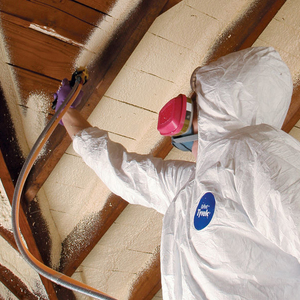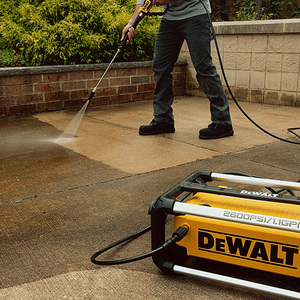The air handlers are in the attic (insulated ducting). The floor is completely cover with plywood (great for storage, not so great for adding insulation).
The easiest approach would be to put insulation in the rafters and create a warm attic. I can do this with propervent to maintain a cold roof. and isolate the soffit venting so it doesn’t let air into the attic proper. If I use this approach, one of my concerns is the vapor barrier. Should I use unfaced fiberglass with no vapor barrier? Would a warm roof be better (no cold air path from soffit vents to ridge vent (I believe this is recommended with spray foam)?
Is this reasonable, or should I be looking at completely removing the plywood and creating a raised platform with insulation under it?
Thanks,
Tony



















Replies
You would get some benefit out of doing it that way, but you are also theoretically increasing the amt of 'conditioned' space by some marging, relative to the new insulation payback.
You would definitely get better and faster payback by ioncreasing the insulation where it is. Also, blowing cellulose or chopped FG would give you a better insulation than bats - less infiltration allowed to pass through.
Welcome to the
Taunton University of Knowledge FHB Campus at Breaktime.
where ...
Excellence is its own reward!
Well, a location would be germane to the question, as the approach in Arizona will ba bit different than, say, in Alberta. So, being in a majority heating climate is a tad different than being in a majority cooling one.
This also affects the VB question, too. Because the easy answer is that you leave the VB where it already is (begging the question, naturally, as to whether that's correct or not).
Now, given that you have a plywood deck in place, that complicates things.
During heating season, warmth rises up to the ceilings, heats the material there and tries, inexorably, to "get out." In your house, it is stymied by some insulation, and then a plywood deck. Adding more insulation over the plywood might do some good, it would not radiate away quite so readily. But, it might be easier to just lay sheets of rigid foam over the plywood as any other answer (and you have fewer problems of people "whooshing" the insulation way to store junk on the attic deck, too).
During cooling season, the sun heats the roof, heating the roof deck which heats the roof framing which heats the air in the attic. That air will heat the plywood deck, which will then try to heat your ceilings (which already have warm air puddled up against them from below). The existing insulation is the barrier slowing this process down. Now, in cooling season, you have an additional fillip here. The ductwork in the attic is in all of that heated air. The ductwork is insulated, but generally, only to about R6 or R8 or so. So, it has some resistence to the heat (6-8x over a "bare" duct, for practical purposes), but not a lot. When the a/c fires up, that hot air in the ductwork gets pushed into the house to be cooled. (Mild day here, today, only 138º in my attic; registers show 122º air when the a/c comes on.)
Now, this is where insulating the bottom of the roof deck starts to make sense. If you can moderate the heat in the attic just a few degrees, you a/c works better. The "trick" of that is that it's a real pain to insulate a roof deck. Oh, not the 80% that's clear open runs, no, it's the 20%, with "stuff" in the way, or down at the eaves--that's the work of it. Which means it can be easily be done incompletely--and that's the great failure of most insulation systems, is in where they are done poorly, incorrectly, or not at all.
Our home is in Connecticut, so we get the cold of winter and the heat and humidity of summer.
I understand the challenges of insulating the roof, but am leaning in that direction for a couple of reasons....one, the air handlers sitting in all that hot and or cold air and, two, the difficulty of adding the floor insulation. There is a stairway to the attic and I'd have to create another step up and then a platform on top of that to make it work.
My major concern with insulating the roof is moisture movement into the attic (even though there is a vapor barrier) and my ability to completely seal the soffit vents to insure the air flow to ventilate the roof doesn't leak into the attic. On the first count, I'm assuming no vapor barrier on the bat insulation would be the right answer.
Thanks for all the replies
Tony
My major concern with insulating the roof is moisture movement into the attic
If the VB in the conditioned space is ok, having the plywood deck will certainly limit any leaks.
Going to the roof with more insualtion can make sense. You are far enough north that skipping roof ventilation is probably not a good idea. So, baffles with blown-in cellulose; batt insualtion, rigid foam sheets--a number of ways to execute this.
Here's my quick-n-dirty method for testing how tough roof insualtion can be. Go to the big box and getexactly one sheet of rigid foam (the 1/2" blue cheap stuff will suffice). Cut the sheet 14" wide its whole length long (store the remainder where the kids are less likely to play with it). Take your test piece up to the attic. Note how much fun it is to get through a hatch, or to plop next to the attic stairs. Pick a corner of the roof, and go over to it. Go back and bring the foam text piece this time. Now, see if it will fit nicely all the way from down at the bottom to right up to the top. Repeat for each rafter bay (generally).
This "rehersal" will help identify things. Like, you might need a step-stool or ladder to reach the ridge. Or, that you might need a mechanic's creeper to get out to the eaves. Or, that you might need an extra forearm elbowed off your wrist to work around the chimney, or behind the aifhandler or the like. Much better to learn this now, than with rental equipment (or insulators) idling in the yard.
Spooky today; the tail end of the ridge that made for exciting weather last week in Indiana has rolled through town with a couple hours of rain. It's mild other than being very damp--until one reads the conditions: 82º 82%RH 76ºDP S 8 for 88ºHI. At least it's only 98º in the attic.Occupational hazard of my occupation not being around (sorry Bubba)
Getting into the attic isn't too hard because I have a stairway the goes from the first floor, to second floor, to attic. Three flights for every trip makes for great exersize.
I have a 10 in 12 pitch, so getting to the soffit isn't too bad. I also have collar ties about 8 ft up. I would run the insulation up the rafters, across the collar ties and then down the other side, so I don't have to get to the very top of the roof.
It will be challenging, but such is life.
Thanks for your thoughts on this.
Tony
But before you make any long-term plans, try a pilot project. Working in any attic is a b*tch, and it's good to know what the bottlenecks are.
It is an ironic habit of human beings to run faster when we have lost our way. --Rollo May
what is your location?
The location is northeast CT.
Tony
There have been some research done (on real houses!) related to creating a warm/conditioned attic. Since ductwork is there, there is loss/gain through the ductwork (by conduction) and there is duct leakage ... which can be significant ... therefore there is a benefit from simply enclosing it into your conditioned space ... at some expense of increased wall and roof area. A California Energy Commission PIER report targets exactly this issue/concept ... although more w/ a focus on being in a cooling climate. The problem/key is the consistency of the vapor retarder .... trusses make it much more difficult to have a continuous vapor retarder. Barring that, your idea holds water (hopefully not moisture) and merit. Gather more info, though. Don't stop w/ me.